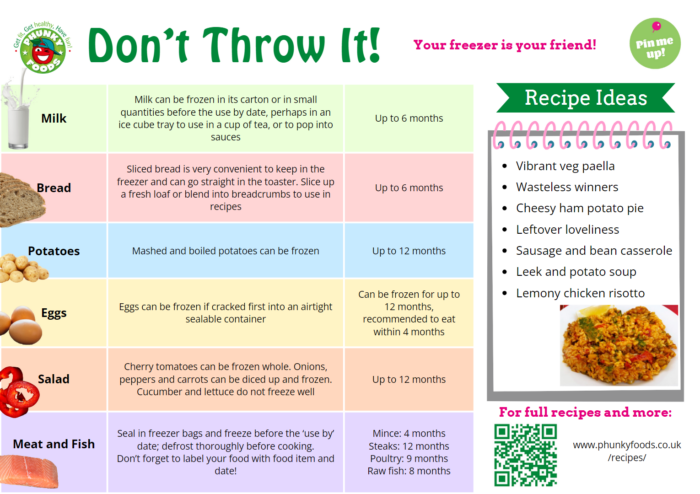When the food we buy ends up in the bin, that’s money down the drain – in fact up to £60 a month for a family of four according to estimates (WRAP, 2023). Not only that, but it’s harming the environment: wasted food means more greenhouse gas emissions and global warming, deforestation, and water shortages. Food waste also contributes to social issues like global food shortages and food poverty. But in our fast-paced, 24/7 society, is it really possible to save those over-ripe bananas or that limp lettuce from landfill? The key is creative thinking and a well-stocked store cupboard.
How much is wasted?
- 4.5 million tonnes of edible food is thrown away in the UK every year
- 24 million slices of bread
- 5.9 million glasses of milk
- 5.8 million potatoes
'Best Before' or 'Use By'?
Best Before Dates refer to quality, food will still be perfectly safe to eat for some time after this date. However, food should not be eaten after the “Use By Date”, as it may then contain harmful bacteria that we cannot see or smell.
Menu Planning
Menu planning and shopping lists are a great way to help avoid food waste. Get the kids involved to help design a family menu planner to use each week.
How can we help?
Much of this food waste could be avoided if we use appropriate portion sizes, and get creative with any leftovers, or food that is not at its best. An easy way to avoid food waste is to measure out the correct portion sizes when cooking. E.g. An adult portion size of pasta is 75g, and a child’s (4-10 years) portion size is around 55g.
What about food packaging?
We could minimise the amount of food packaging waste that we create by using our own shopping bags; buying food in recycled and recyclable packaging; not purchasing single-portion food items e.g. mini sticks of cheese, try choosing a large block that can be portioned accordingly; wrapping food in reusable wraps or containers instead of cling film.



